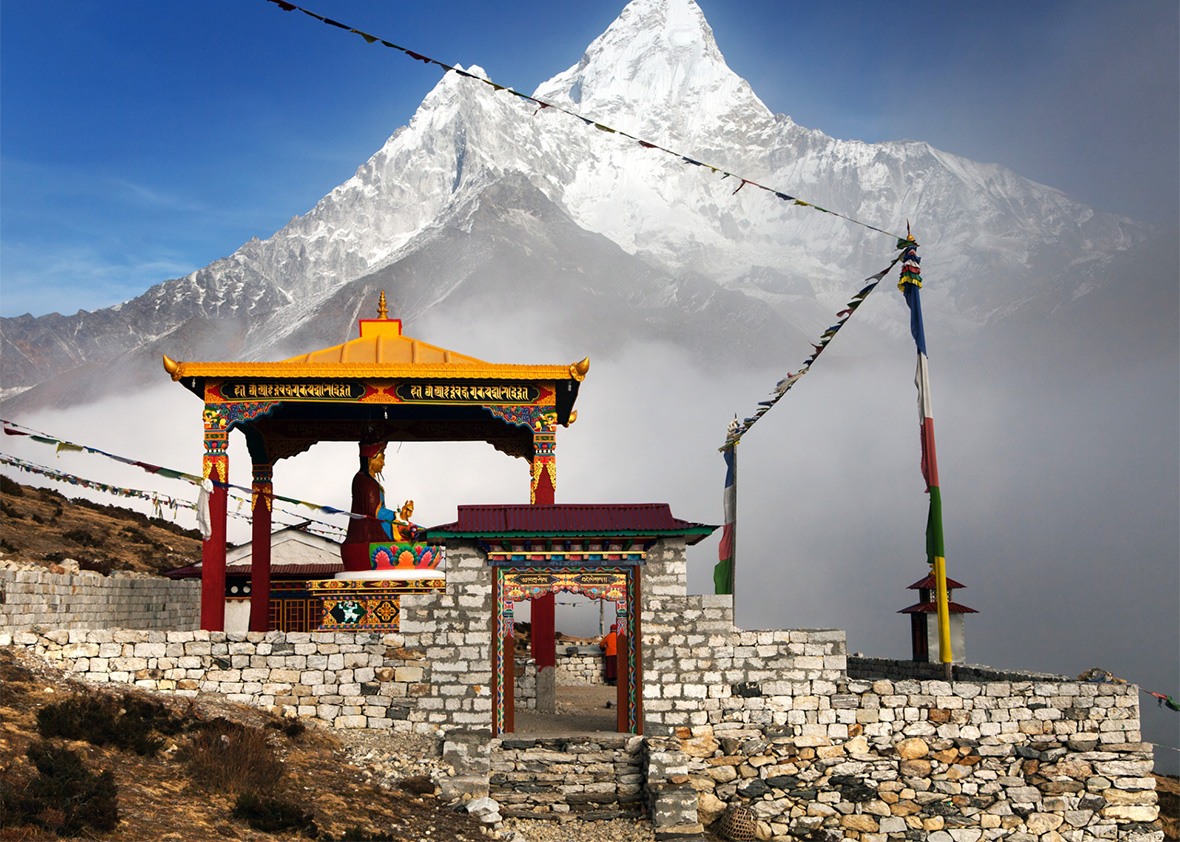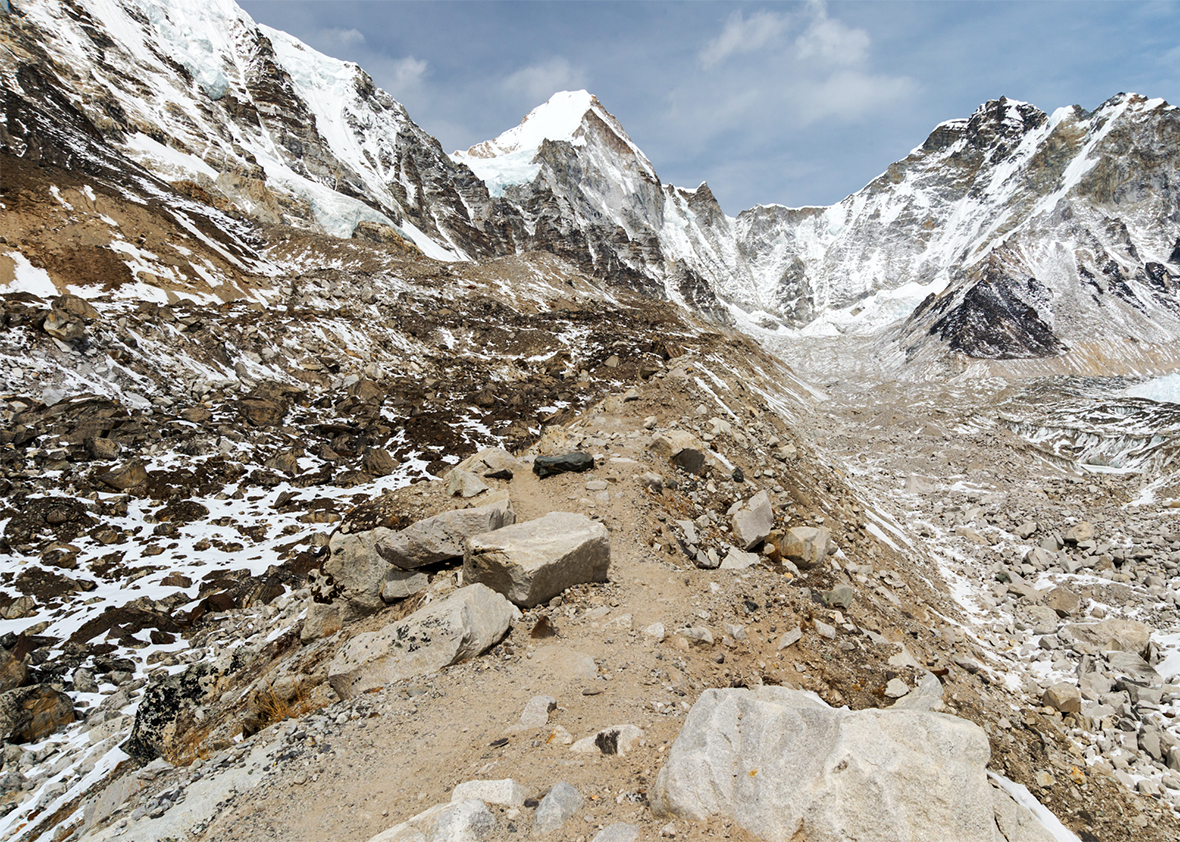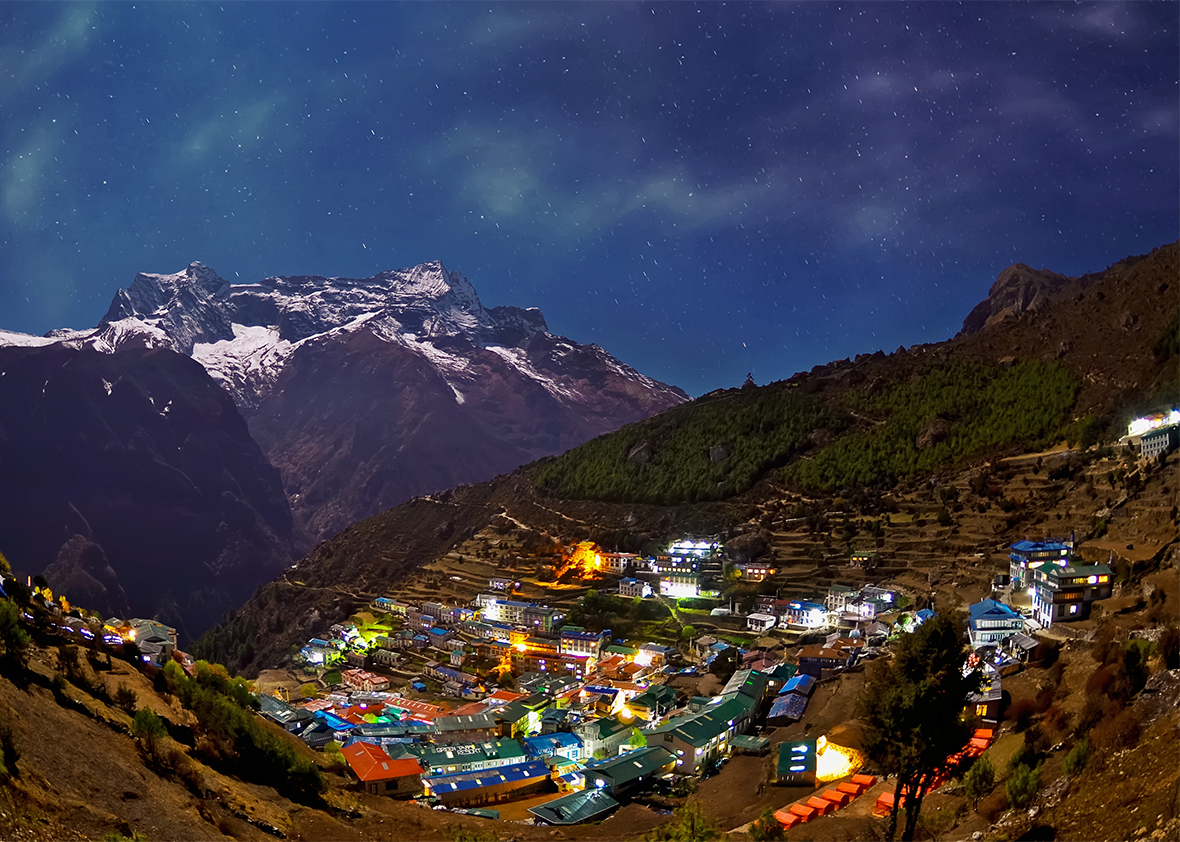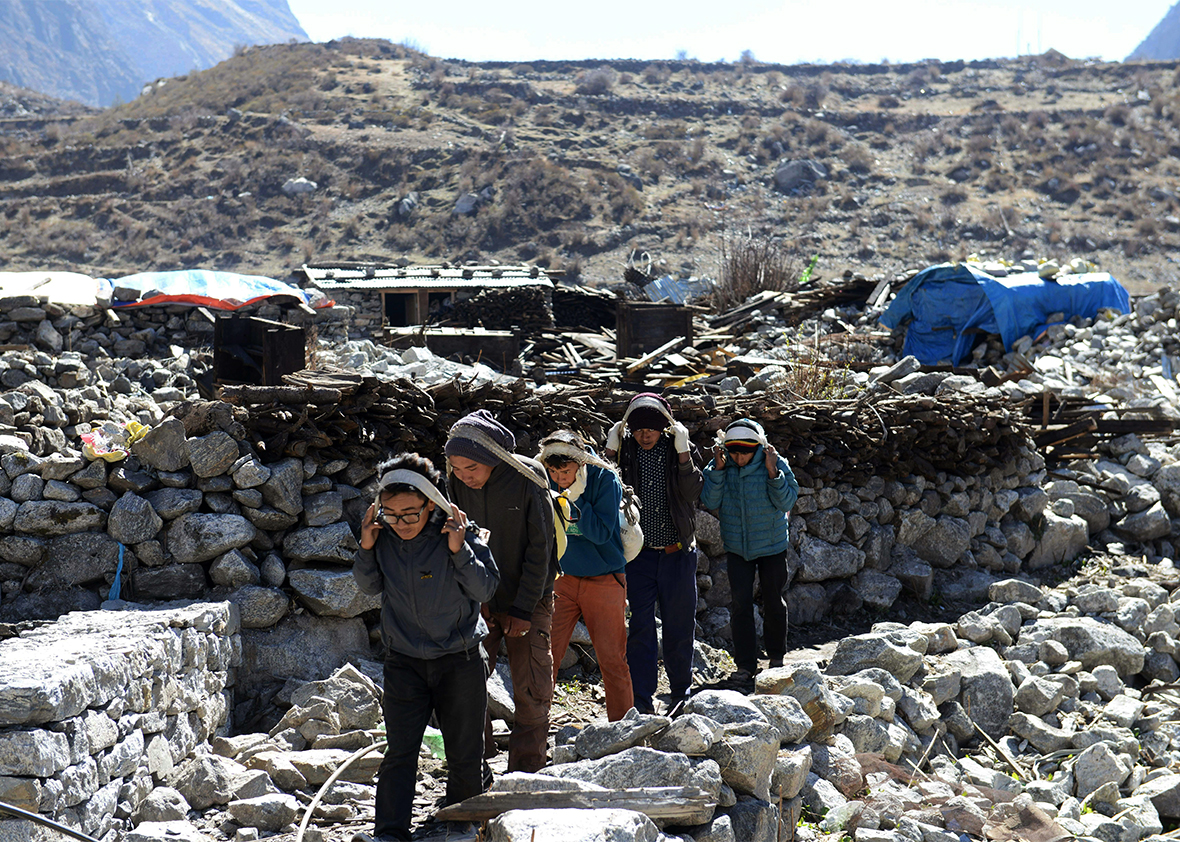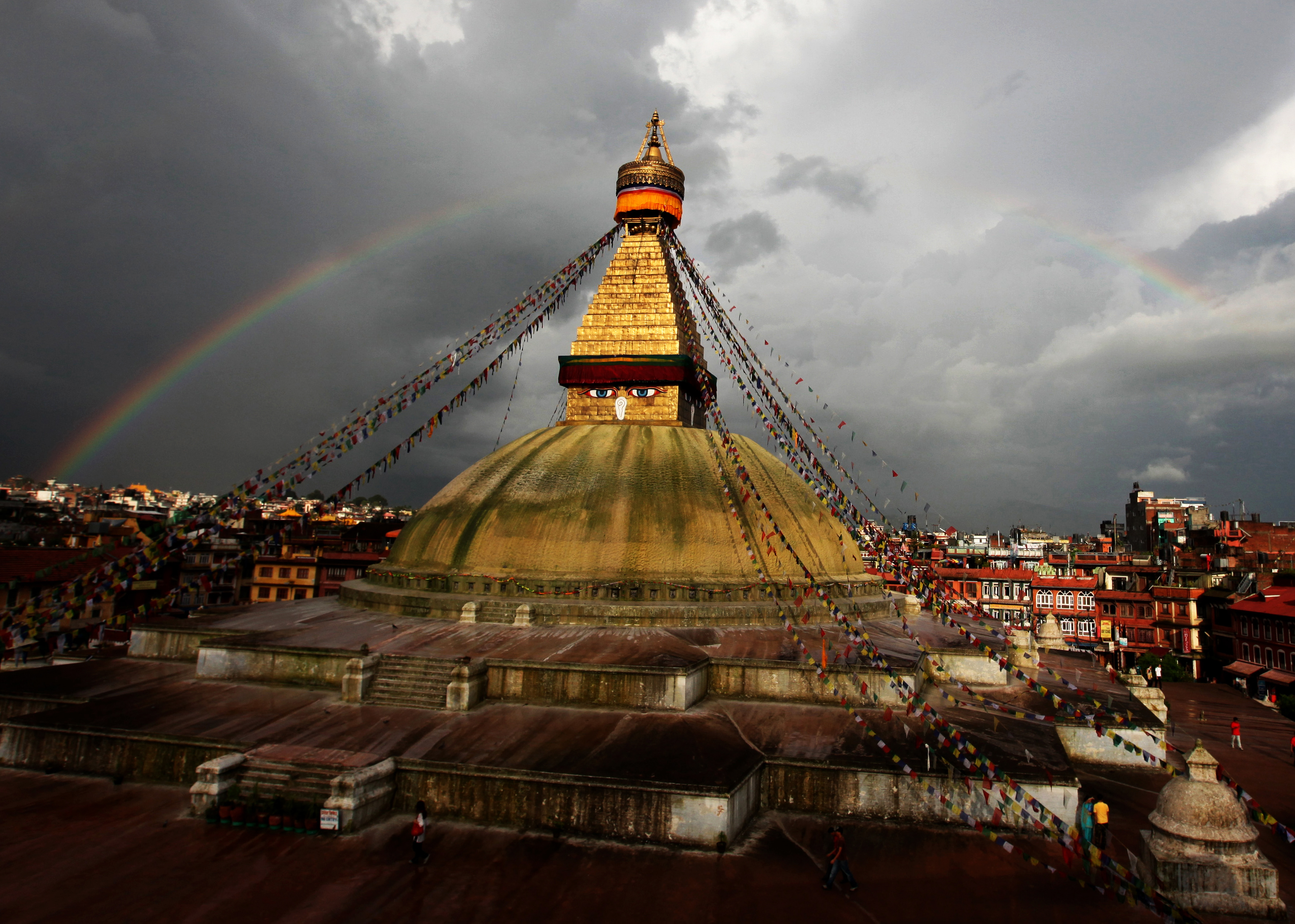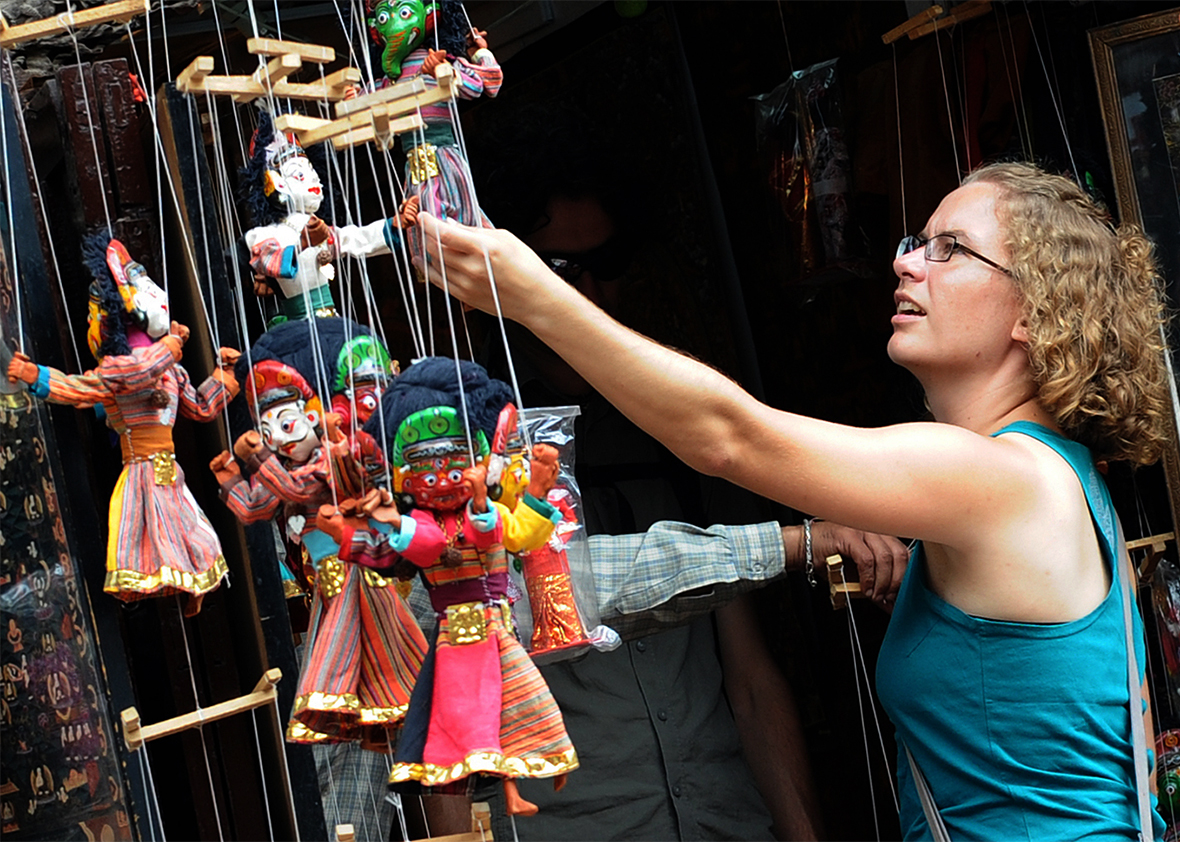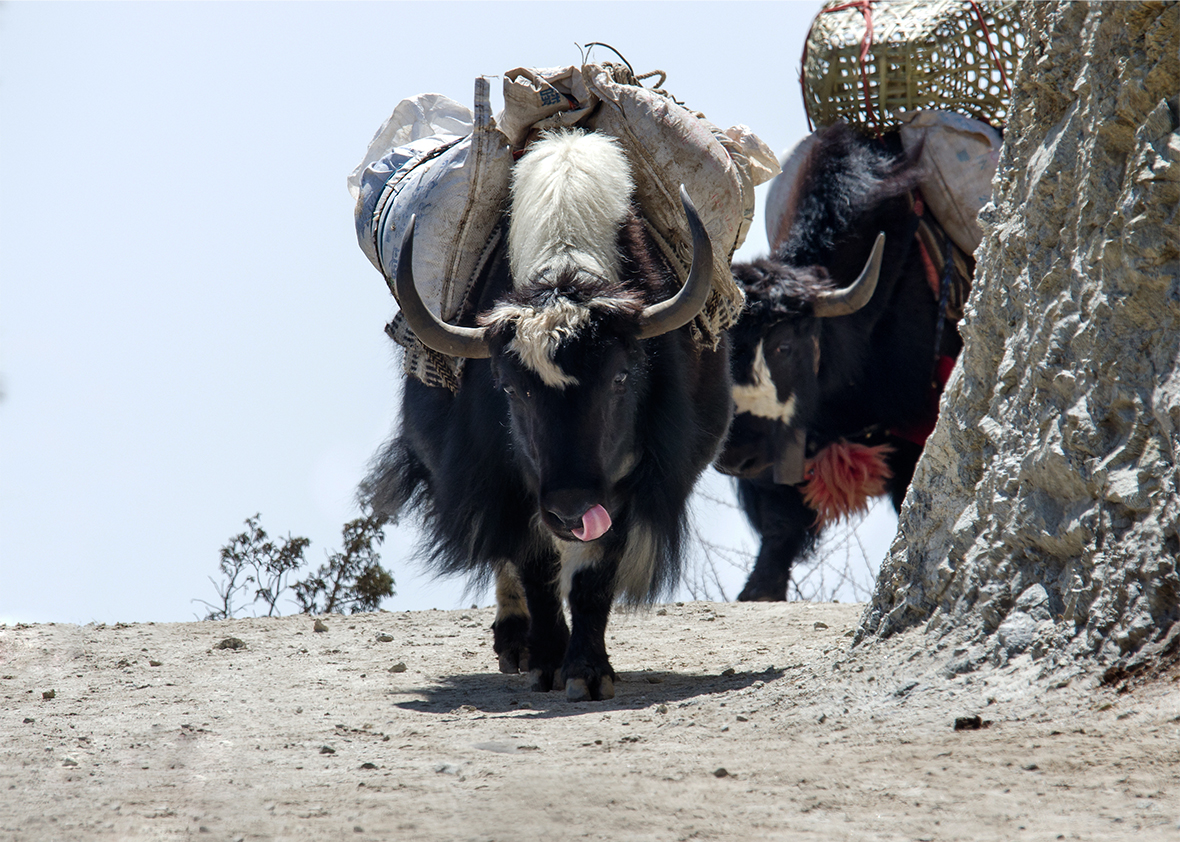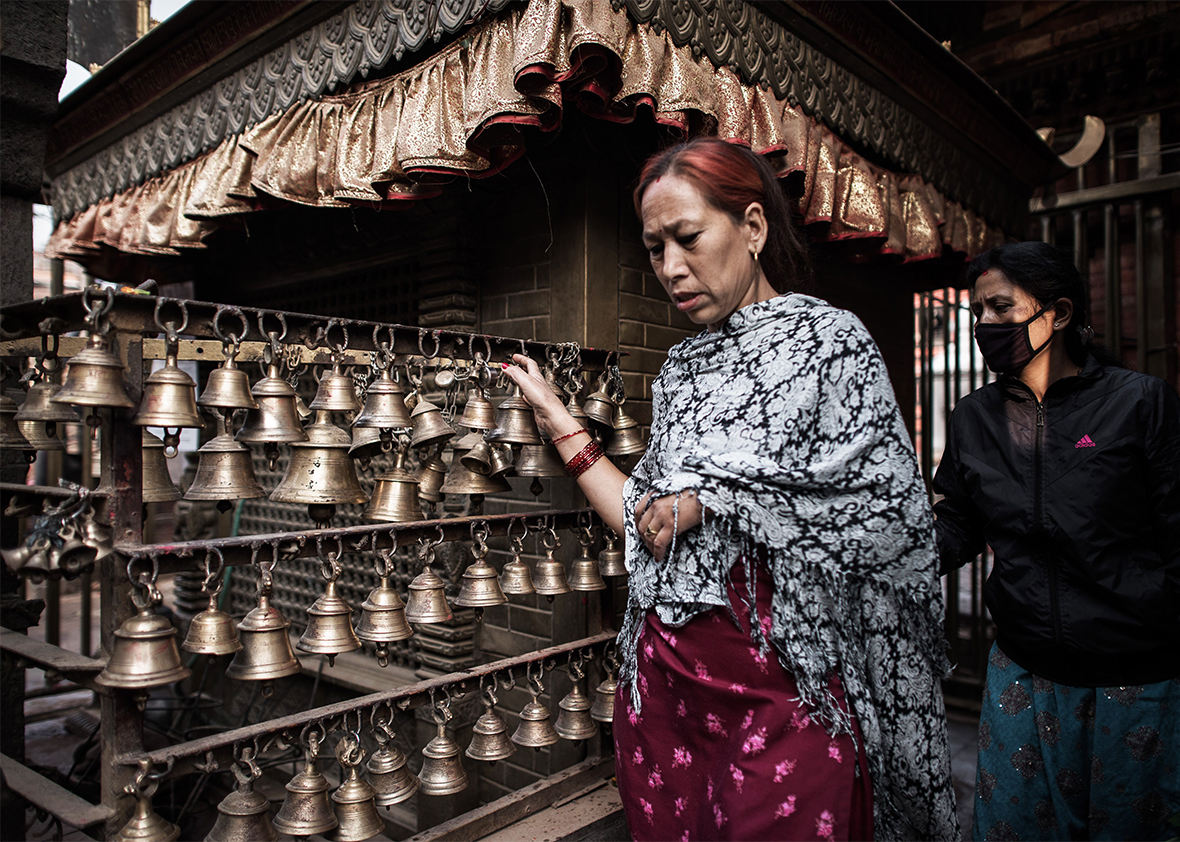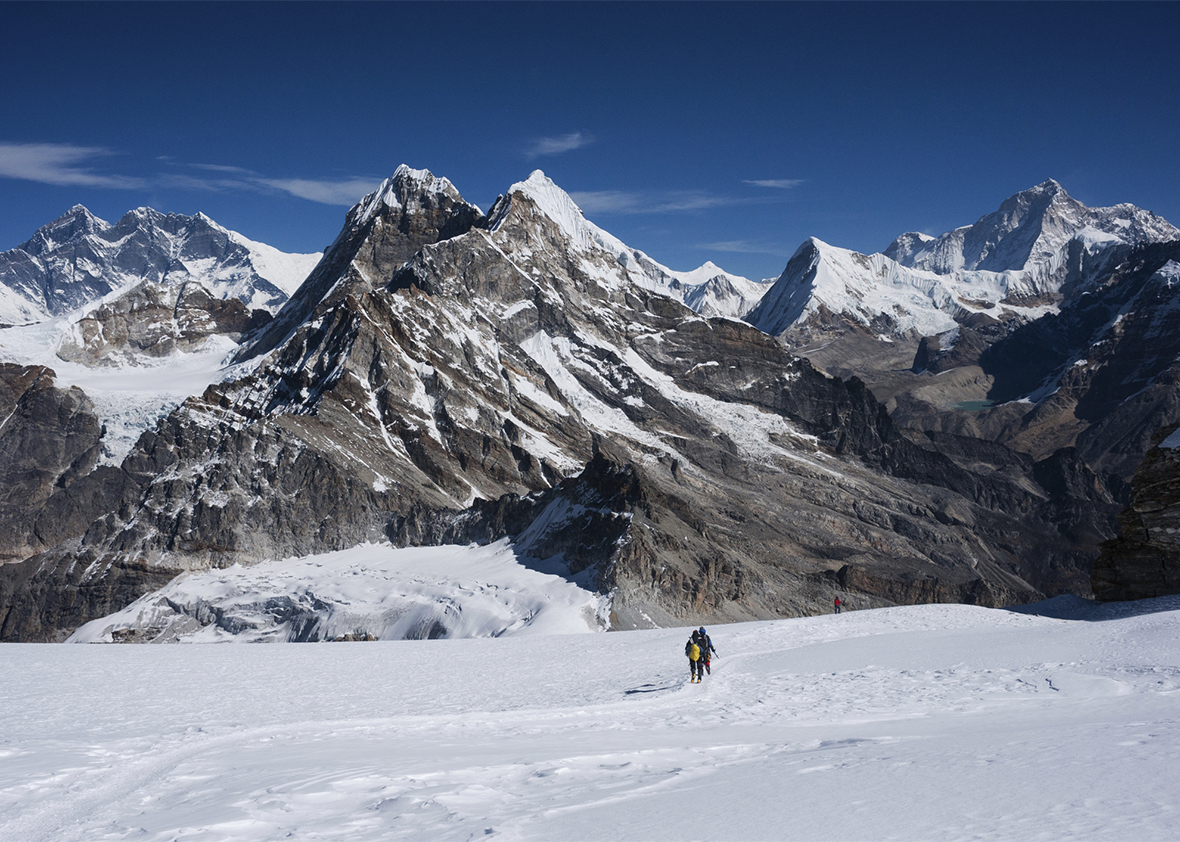The Abominable Tourist
Will international visitors help Nepal rebuild after last year’s earthquake, or will they only make things worse?
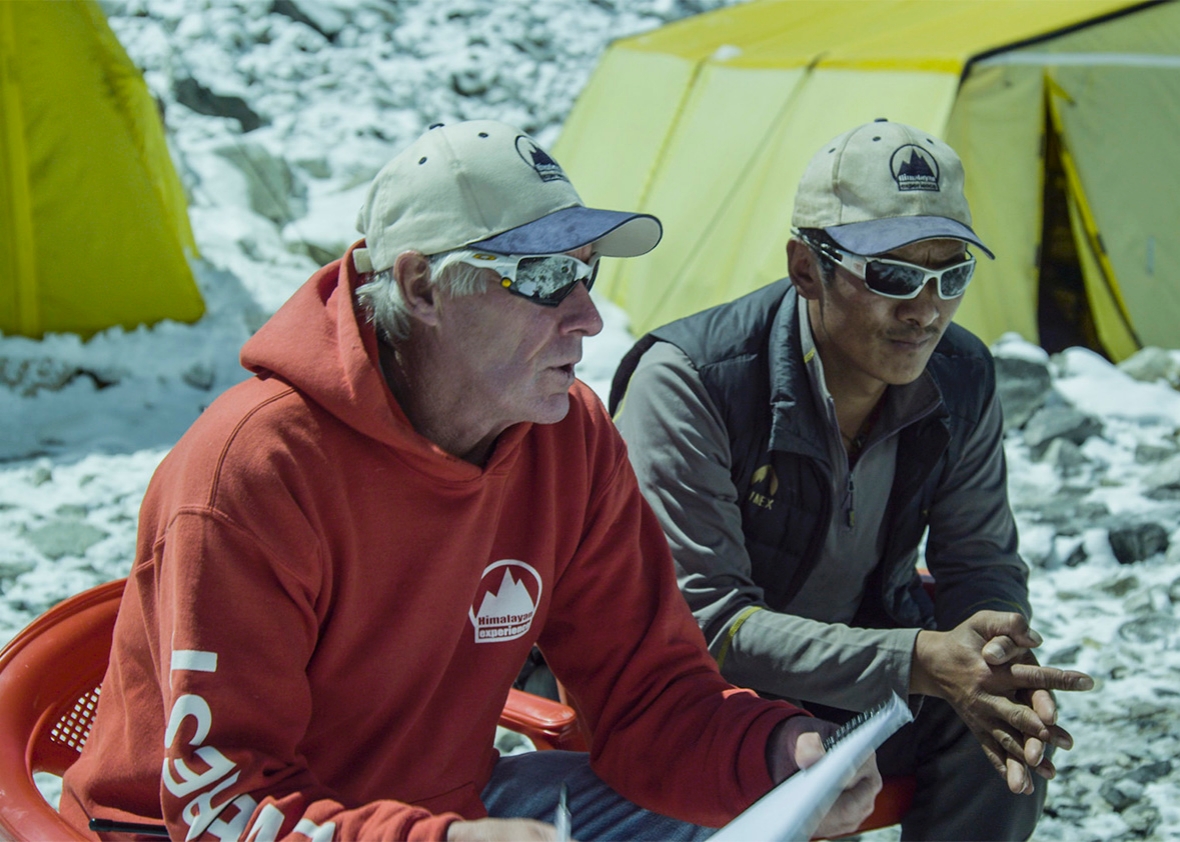
Discovery Channel
Jeff Brown has spent his life searching for new adventures. “I have shared beef kabobs with Georgian Freedom Fighters in the Caucasus Mountains in the shadow of Mt. Elbrus,” the Florida defense attorney boasts on his website. “I’ve laid down in the marble tomb of the pharaoh Kefron … and been blessed by a Buddhist lama in the Himalayas deep in Nepal—twice.” But for all of these accomplishments, Brown has not yet reached the peak he cares about the most. He’s never summited Mount Everest.
It’s not for lack of trying. Two years ago this week, Brown’s dreams were buried in the snow and ice. While he and his fellow paying members of a commercial expedition acclimatized in safety on a nearby peak, their local helpers—ethnic Sherpa guides and porters—were making back-and-forth trips across the Khumbu Icefall, a stretch of mountain sliced with crevasses and tucked beside unstable cliffs. The Westerners would have to make this risky journey only twice, according to the plan—on their way to reach the mountain’s summit and then again as they returned. But the Sherpas, whom Brown and others called “their boys,” would have to navigate the icefall many times, to shuttle oxygen, tents, food, and other supplies from Everest Base Camp to several stopping points along the summit route.
On April 18, 2014, an avalanche collapsed onto the icefall, and 16 Sherpas died. In the days that followed, their countrymen organized and went on strike against the expedition companies. Noting that they earned just $5,000 to $10,000 for their heavy, deadly work—a fraction of the mid–five-figure tabs that each Westerner paid to go on the trip—the Sherpas decided they would end the season early and go home.
All of this is captured in an excellent documentary, Sherpa, which premiered Saturday on the Discovery Channel. The director, Australian filmmaker Jennifer Peedom, started filming before the avalanche. She’d meant to travel with Phurba Tashi, a Sherpa guide who planned to summit Everest for a record 22nd time as he led a group of Western tourists that included Brown. But the avalanche turned Peedom’s film into something else: a disturbing study of a labor-management dispute, negotiated at 17,600 feet.
Peedom visits with Phurba’s family before the expedition starts and finds his wife in tears. She’s already lost family members to the tourist trade, and she begs him not to go. Another, older relative recalls a time when Sherpas didn’t make their money from the mountain and lived by growing tubers instead. “Maybe we should eat mashed potatoes again,” he says.
Interactions between the Sherpas and the Westerners had already gotten testy by that point. In 2013, three climbers insulted local mountaineers, with one of them using the Sherpa word for “motherfucker.” In the ensuing chaos—Peedom shows some footage from the melee—the Sherpas seemed on the verge of beating men to death. The avalanche left the Sherpas even more despondent and enraged, and willing to forgo their major source of income.
Peedom captures footage of Russell Brice, an Everest-industry celebrity and head of Phurba’s expedition, as he explains the Sherpa strike to his paying customers. “These people are totally irrational, they don’t care,” he says. “It’s mob rule.” Then he blames the situation on four or five members of the Sherpa group—the bad apples. Neither Phurba nor any of the other “boys” on his team were injured in the tragedy. Brice tells his clients that most of the Sherpas would be happy to proceed on the trip to Everest, if it weren’t for the ones who were scaring them.
Phurba tells the film crew this isn’t true: He hasn’t been intimidated by his countrymen; he just wants to go home. But Brice keeps repeating this excuse to the mountain tourists as the crisis mounts. He claims his boys are worried that if they try to climb the mountain, other Sherpas will show up to break their legs.
No one takes the news worse than Jeff Brown. “Do you know who employs them, Russ?” he asks, referring to the phantom instigators. “Is there no way to talk to their owners?” His expedition is on the verge of falling apart. “We’re being held captive by terrorists,” he says. “We in the states know what that is: It’s 9/11.”
* * *
A year after the deadly avalanche of April 2014, a violent earthquake struck Nepal, killing almost 9,000 people and destroying 600,000 homes. Close to 1 million people have been reduced to poverty. At Everest Base Camp, the earthquake killed 19 mountain climbers, including 10 more Sherpa guides.
I traveled to Nepal last fall, to hike in the mountains around Everest and to see how—or whether—the country had rebuilt itself. My trip, worth about $6,000 so far as I could tell, was paid for by a nonprofit called Samarth-Nepal that tries to combat poverty in one of the world’s poorest nations. It was co-sponsored by the Adventure Travel Trade Association.
My group comprised both travel journalists and travel agents, and our hosts were hoping we’d spread the message that it’s safe to travel to Nepal and to trek the country’s beautiful mountain trails. Up to 800,000 tourists make this trip in normal years, employing 500,000 locals and delivering about $350 million to the economy. But in the earthquake’s aftermath, these numbers had dropped by about two-thirds.* In theory, journalists like me would tell the tourists not to worry and help to bring them back.
It didn’t take me long to realize this mission might be self-defeating. When I told my friends what I was doing, most responded with bewilderment: There had been an earthquake in Nepal? By assuring people that it would be safe to travel to Nepal, I’d managed to remind them that something bad had happened there.
Indeed, until last week, in the run-up to the earthquake’s anniversary Monday, there’s been very little coverage of the repercussions: the monthslong fuel embargo that made the situation worse, the hundreds of thousands who remain without homes, the $4.1 billion in international assistance that has yet to be disbursed. But my trip left me wondering whether that news blackout might be useful to the tourist trade. Those who’d like to travel to Nepal may overlook its recent past. If they don’t find the country dangerous, inhospitable, or sad, it’s because they aren’t thinking why it might be dangerous, inhospitable, or sad. Then there are the guys like Sherpa’s Jeff Brown, who has now tried to summit Everest twice, travelers who are so oblivious and self-involved that nothing will deter them.
My trip offered hints of how the tourist trade sustains itself through exploitative interactions, some that are conspicuous and others that aren’t so obvious. Our retinue of Sherpas reminded me of highly trained Secret Service officers, protecting us even when we didn’t realize we were under guard. One night I noticed that a guide was tailing me through a crowded marketplace, his buff pulled up above his nose like a bandit’s. He made sure I wasn’t lost but never said a word. Otherwise the Sherpas behaved like herders as we made our way among the mountain villages, smiling patiently as we trudged along the trails like swollen yaks.
One day we made our way down a steep and rocky path with Everest in the distance—an ugly bully on the skyline, with a fringe of snow like dandruff on its hulking shoulders. As we clicked our metal hiking poles and shuffled in synthetic pants, we passed a group of women from another, poorer region of the country. They’d come to labor for the locals who run lodges for the mountain trekkers. For about $4 per day, these women gathered leaves at lower altitudes, then stuffed them into giant baskets, 85 pounds each, and strapped them to their backs with a band that wrapped around their foreheads. Then they trudged up and down the mountain in their flip-flops. (I think the leaves were for latrines.)
We stopped to talk to one, with our Sherpa guide translating, as she took a rest and sipped fermented rice liquor from a plastic bottle. A member of our group picked up the heavy basket and posed for photos while we giggled at its size and weight. Another asked the woman for a photo: “Pict-cha, pict-cha?” he said to her in tourist Esperanto. She demurred, telling us she’s not pretty enough to be in pictures; her face was red and puffy from the liquor. “You are very pretty,” the photographer said. “You are very, very pretty!”
When she finally agreed to let him take a picture, the whole group converged and one camera turned into a bank of them, as if she were at a film premiere. The woman seemed frozen in our viewfinders, uncomfortable but unable to renege on her agreement. Then someone asked to take a picture of her hands—blackened, calloused, and crusty—and she refused, saying once again they weren’t pretty. “But they’re interesting,” the photographer explained. “Pict-cha? Pict-cha?”
At last the scrum subsided, and as we resumed the trek, I noticed one of the Sherpas stayed behind. Very quickly and quietly, she passed a wad of bills to the drunken woman with the basket. It was a covert payment, and one we weren’t meant to see. It left me wondering how many other wads of cash were passed behind our backs, and how it would have felt to have them all exposed. Would seeing them have diminished our enjoyment of the trek? Would it have ruined the adventure? Perhaps the less we thought about the economics of the industry, the more fun we’d end up having, and the more inclined we’d be to recommend the trip—and the more tourists would arrive, bringing badly needed money to the people of Nepal. Was it better to confront this power differential, or better to obscure it? The ethics were confounding.
Near the start of Sherpa, before the deadly avalanche, one Australian adventure client tells the camera why she wants to reach the top of Everest. “I love the Buddhist side to it,” says Annie Doyle. “I love the Nepalese people. … It’s so cool that you get to share this with these beautiful people.” A few days later, 16 Nepalese men were killed on the Khumbu Icefall as they prepared the path for her expedition.
Like Jeff Brown, Doyle found this setback very frustrating. She’d tried the climb once before, in 2012, but that trip, too, had been abandoned after one of her party’s Sherpas died en route. This time through she thinks she could have done it: “Everest was, and is, in good shape to be climbed. It’s bloody beautiful,” she told a newspaper in Australia. But the experience hasn’t put her off from going to Nepal, and spending tens of thousands of dollars so she can climb the tallest mountain in the world. Whatever else might happen to the tourist trade, Annie Doyle plans to be a repeat customer. That’s a good thing, right?
*Correction, April 28, 2016: This article originally misstated the effect of the 2015 earthquake on tourism to Nepal. Visits by tourists and revenues from tourism dropped by about two-thirds, not one-third. (Return.)

